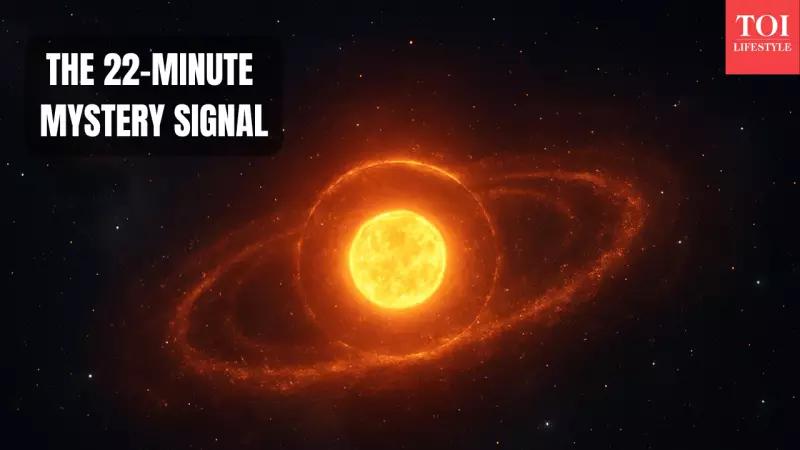
In the vast, silent expanse of the cosmos, astronomers have stumbled upon a rhythm that defies explanation. A steady, repeating signal, much like a cosmic heartbeat, is pulsing from the depths of space, challenging our fundamental understanding of the universe.
The Discovery of a Cosmic Metronome
The story begins in 2018, when radio telescopes at the Murchison Widefield Array (MWA) in Western Australia picked up something extraordinary. Unlike the random crackle of most cosmic radio waves, this signal was remarkably regular. It was a two-minute burst of intense radio energy, followed by a long silence, then another pulse, repeating with uncanny precision.
The object, catalogued as GLEAM-X J162759.5-523504.3, was first identified by a team led by Dr. Natasha Hurley-Walker, an astrophysicist at Curtin University and the International Centre for Radio Astronomy Research (ICRAR). In their landmark 2022 paper published in the journal Nature, they described it as one of the most unusual phenomena ever observed. The initial data showed a pulse every 18.18 minutes. Later, in 2023, further observations revealed a similar object, or perhaps the same one, beating at a slightly slower and more stable rhythm of 22 minutes between bursts.
Not a Pulsar, Not a Magnetar: A New Celestial Beast?
When astronomers hear periodic signals, they typically think of pulsars. These are rapidly spinning neutron stars that act like cosmic lighthouses, emitting beams of radio waves. However, their pulses are incredibly fast, lasting mere milliseconds or seconds. Even the slowest known pulsars rotate about once every 10 seconds. A 22-minute cycle is astronomically slow and falls far outside the known physical limits for a spinning neutron star.
This rules out typical pulsars and even magnetars, which are neutron stars with immensely powerful magnetic fields. While magnetars can emit energetic bursts, they have never been observed to do so at such languid, steady intervals. Dr. Hurley-Walker suggests this mysterious object might be the first confirmed sighting of an ultra-long-period magnetar, a theoretical type of star that has never been seen before.
The signal's longevity is another puzzle. It remained stable and detectable for several months in 2018, far longer than typical magnetar outbursts, which usually fade quickly. This suggests it is powered by an energy source or mechanism that scientists have yet to comprehend.
What Could Be Causing This Cosmic Heartbeat?
Scientists are exploring several leading theories to explain this enigmatic radio signal:
- An Ultra-Long-Period Magnetar: This is the frontrunner theory—a rare, slowly rotating neutron star with a magnetic field potent enough to generate powerful radio waves long after its kindred stars have faded into silence.
- A White Dwarf Pulsar: It could be a highly magnetised white dwarf, the remnant of a dying star. While less dense than a neutron star, a white dwarf could potentially produce such periodic emissions.
- A Binary System: The signal might originate from a pair of stars orbiting each other, where periodic bursts are produced as one star eclipses the other or transfers material.
Yet, none of these models perfectly account for the signal's remarkable consistency, intense power, and extraordinary duration. The bursts are so bright they can be detected from an estimated 15,000 light-years away, in the direction of the Scorpius constellation.
The Future of the Cosmic Pulse
The discovery has sent ripples of excitement through the global astronomy community. Researchers are now intently monitoring the object, hoping that next-generation telescopes, especially the upcoming Square Kilometre Array (SKA), will capture more data and potentially find more of these celestial heartbeats.
For now, GLEAM-X J162759.5-523504.3 remains a profound mystery. It is a steady, rhythmic pulse in the darkness, a 22-minute metronome marking time in a realm we are only beginning to explore. In the cold silence of space, something is beating, and its rhythm is a song we have not yet learned to understand.





